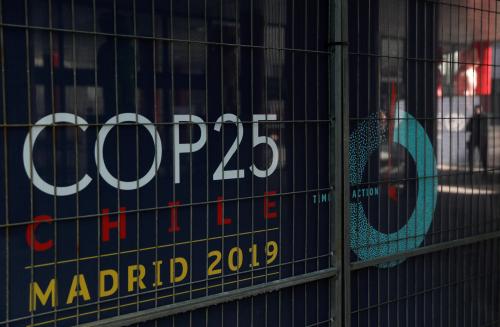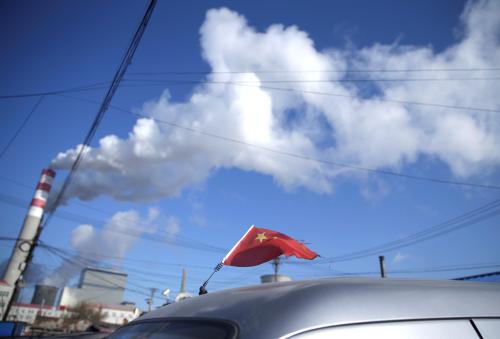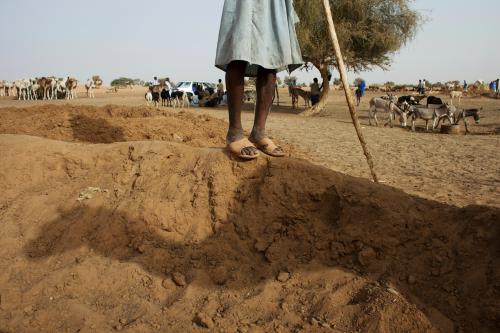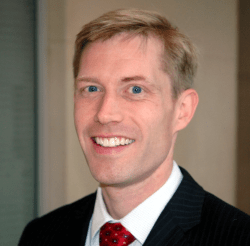The science of climate change is clear that global emissions of greenhouse gases need to fall rapidly to keep the world on a path that limits warming to no more than 1.5 degrees Celsius—a level that already risks significant disruption to ecosystem and human livelihoods. Yet the world collectively is not even close to a trajectory that would achieve this ambitious goal. Adding to the challenge, actions by the U.S. Administration have slowed progress toward reducing emissions in the world’s biggest economy and second-largest emitter. As world leaders are now gathered in Madrid for the annual U.N. conference of parties (COP25), raising global ambition over the next 12 months is the existentially important task for the world community, and it is daunting.
But in this challenging moment there is a story of renewed opportunity, one that can potentially deliver accelerating emissions reductions in the United States, and one that can create the right conditions for a comprehensive climate strategy that includes federal re-engagement after 2020. That story is one that taps into how transformational change has often happened across a broad array of challenging issues—change that is built on a set of increasing actions taken at states, cities, and other parts of our federal system. In such cases, a patchwork of increasingly deep test policies from our “laboratories of democracy” can form the basis for a broadening consensus that can, in turn, support robust and broad federal policy rooted in combined executive and legislative action.
Indeed, across the United States today there is a groundswell of significant and increasingly ambitious climate actions being taken by states, cities, businesses, and others. And a major new study from the America’s Pledge initiative demonstrates not only the magnitude of this coalition but also the impact that current and potential commitments from bottom-up action across the U.S. could have. This work—which I helped lead and which was carried out by the University of Maryland Center for Global Sustainability, Rocky Mountain Institute, and the World Resources Institute—is part of a linked research, engagement, and communications program under America’s Pledge.
The results demonstrate that this groundswell is not only making a difference but has the potential to support a wave of higher action in the United States in the coming decade:
1. The coalition is expanding and is globally significant.
States, cities, businesses, communities of faith, tribal groups, universities, and more who have made commitments to climate action now number over 3,800. Collectively they account for nearly 70 percent of U.S. GDP, 65 percent of the U.S. population, and over half of U.S. emissions. Were they a country, they would be equivalent to the world’s second-largest economy, ahead of China. And they have grown. For example, in just two years the coverage of U.S. emissions has grown from 35 percent to 51 percent.
Figure 1: The coalition of actors in the United States committing to climate and energy policies is expanding and globally significant
 Source: Accelerating America’s Pledge
Source: Accelerating America’s Pledge
2. Expanding state, city, and business actions alone could deliver significant reductions in the United States by 2030.
Our analysis shows that expanded non-federal action, building on what leading states, cities, and businesses are already doing, could drive emissions down 37 percent below 2005 levels by 2030.
3. This “bottom up” action provides a basis for a potential new structure of federal policies that complements and fills gaps in the current bottom-up structure.
Such policies would including both legislative and executive actions, and could include, for example, a federal clean electricity standard or similar policies targeting the power sector. We estimate that such a comprehensive, “All-In” climate policy could deliver 49 percent reductions below 2005 levels by 2030. This extraordinary number, while difficult to achieve, would enable the United States to get on a track that is compatible with global expectations for pathways to 1.5 degrees Celsius.
4. We are already on our way toward this strategy.
That coalition of actors mentioned above has already made significant commitments, for example to 100 percent clean electricity that now covers over a quarter of U.S. electricity demand. Just these current measures alone, without further action, would already get us to approximately 25 percent below 2005 levels by 2030.
The coalition of actors in the United States have committed to actions that would turn a potential growth in emissions to 2030 into a significant reduction. Expanding leadership in ways that we have seen over the past three years would enable further reductions by 2030 even without federal action. But adding ambitious federal action on top of that would enable the United States to get onto a pathway that is consistent with global goals for 1.5 degrees Celsius warming.
Figure 2: A strategy combining bottom-up action with federal reengagement could reduce emissions in line with global goals
 Source: Accelerating America’s Pledge
Source: Accelerating America’s Pledge
This model of action, rooted in diverse actors complementary to national governments, has long been recognized as an important element of addressing climate change, and was formally embedded in the Paris Agreement on Climate Change. In the United States, however, the notable opposition to climate policy from the executive has perhaps driven this process faster across our federal system that reserves significant policy authorities to states, cities, and others. As such, the U.S. is testing a new model of building not only climate action today, but importantly whether this bottom-up strategy can support the creation of enhanced ambition at the national level (Figure 3). While other countries have diverse political systems, such practices may well be able to offer additional routes toward raising national ambition over the coming years—and thus offer one concrete strategy toward a successful, comprehensive response to the climate emergency.
Figure 3: Bottom up action from across the United States can feed a higher level of action nationally
 Source: Accelerating America’s Pledge
Source: Accelerating America’s Pledge







Commentary
Building an ambitious US climate policy from the bottom up
A review of the new report, 'Accelerating America’s Pledge'
December 9, 2019